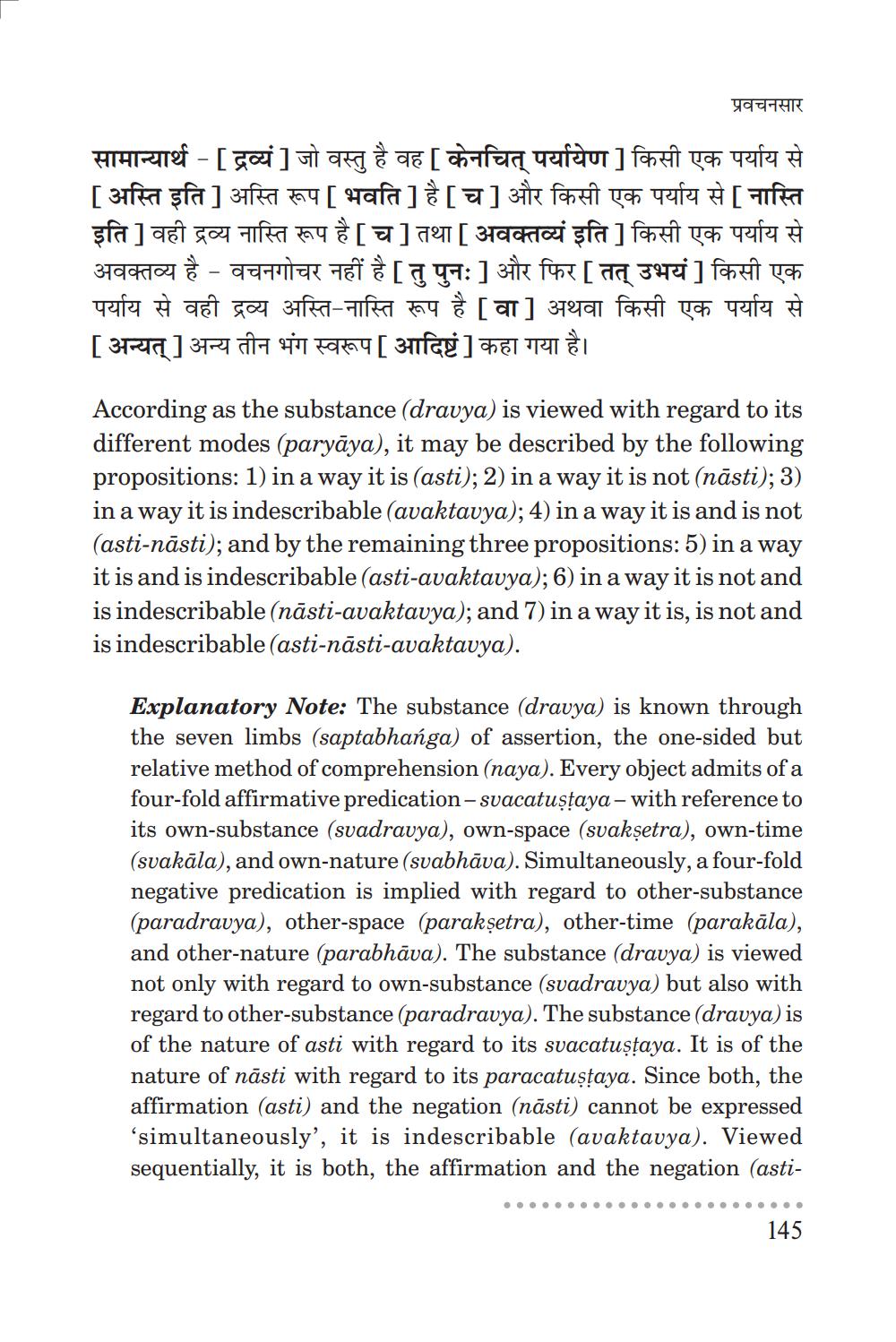________________
प्रवचनसार
सामान्यार्थ - [ द्रव्यं] जो वस्तु है वह [ केनचित् पर्यायेण ] किसी एक पर्याय से [अस्ति इति ] अस्ति रूप [भवति ] है [च] और किसी एक पर्याय से [नास्ति इति ] वही द्रव्य नास्ति रूप है [च] तथा [ अवक्तव्यं इति] किसी एक पर्याय से अवक्तव्य है - वचनगोचर नहीं है [ तु पुनः ] और फिर [ तत् उभयं] किसी एक पर्याय से वही द्रव्य अस्ति-नास्ति रूप है [वा] अथवा किसी एक पर्याय से [अन्यत् ] अन्य तीन भंग स्वरूप [ आदिष्टं ] कहा गया है।
According as the substance (dravya) is viewed with regard to its different modes (paryāya), it may be described by the following propositions: 1) in a way it is (asti); 2) in a way it is not (nāsti); 3) in a way it is indescribable (avaktavya); 4) in a way it is and is not (asti-năsti); and by the remaining three propositions: 5) in a way it is and is indescribable (asti-avaktavya); 6) in a way it is not and is indescribable (nāsti-avaktavya); and 7) in a way it is, is not and is indescribable (asti-nāsti-avaktavya).
Explanatory Note: The substance (dravya) is known through the seven limbs (saptabhanga) of assertion, the one-sided but relative method of comprehension (naya). Every object admits of a four-fold affirmative predication - svacatuştaya - with reference to its own-substance (svadravya), own-space (svakşetra), own-time (svakāla), and own-nature (svabhāva). Simultaneously, a four-fold negative predication is implied with regard to other-substance (paradravya), other-space (parakşetra), other-time (parakāla), and other-nature (parabhāva). The substance (dravya) is viewed not only with regard to own-substance (svadravya) but also with regard to other-substance (paradravya). The substance (dravya) is of the nature of asti with regard to its svacatustaya. It is of the nature of nāsti with regard to its paracatustaya. Since both, the affirmation (asti) and the negation (năsti) cannot be expressed ‘simultaneously', it is indescribable (avaktavya). Viewed sequentially, it is both, the affirmation and the negation (asti
145




